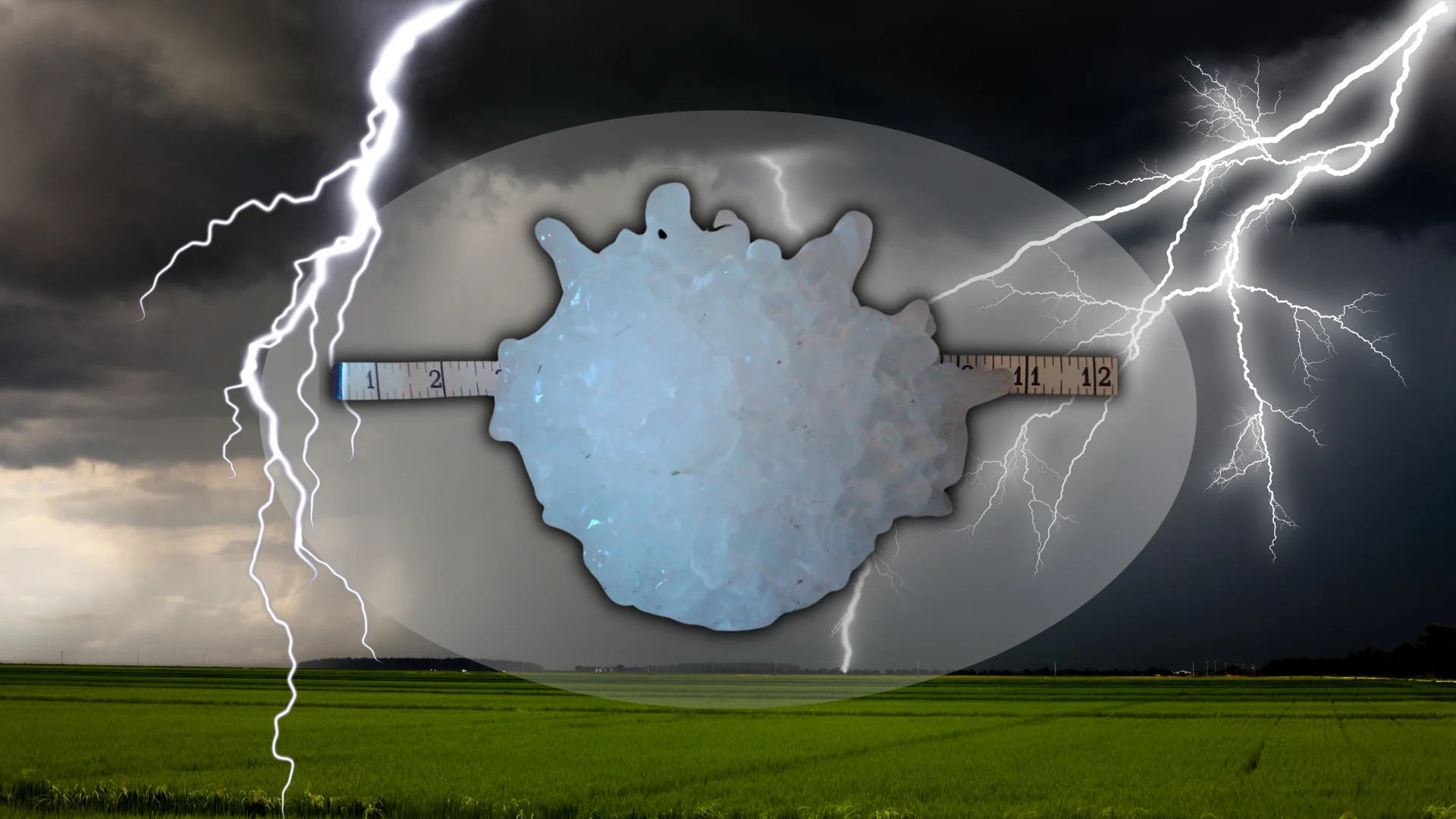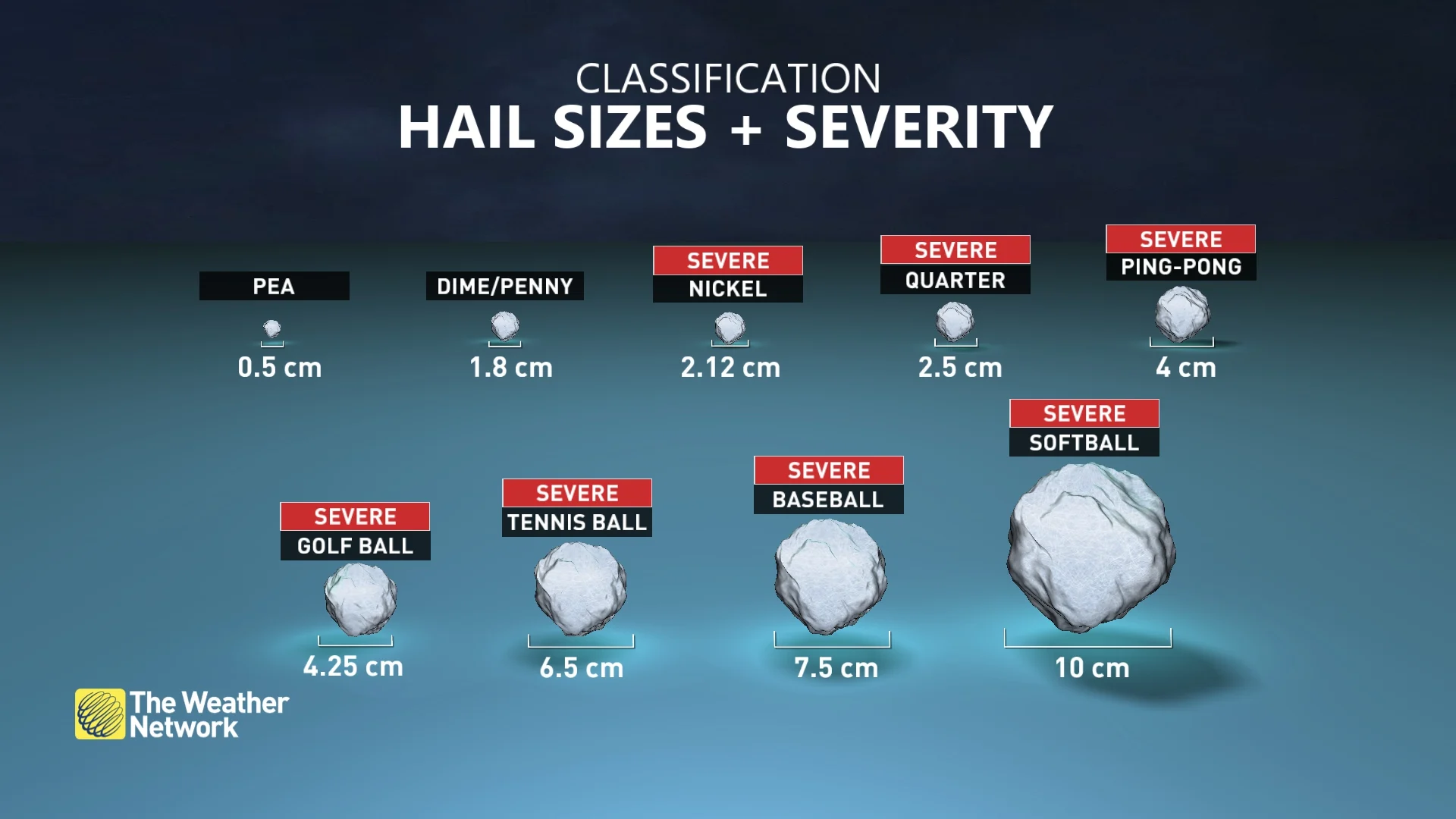
From nuisance to nightmare: Huge hail is an extreme danger
Most hail is relatively small. But some hailstones can grow so large that they punch holes in the ground
Hail is a destructive threat that claims billions of dollars in damage around the world every year.
Most hailstones are relatively small and pose more of a nuisance than a significant threat to life or property. But some storms are capable of producing hail so large it can total vehicles, punch holes in roofs, and even leave behind large divots on impact with the surface.
Some of those huge hailstones can form and slam to the ground right here in Canada.
DON'T MISS: How supercells grow to produce giant hail and intense tornadoes
Large hail requires a powerful thunderstorm
Hail forms when a strong updraft of warm, unstable air feeding energy into a thunderstorm carries raindrops high into the atmosphere. These raindrops freeze in the frigid temperatures within the storm itself.
Layers of ice slowly grow on these frozen raindrops as more water sloshes onto them, allowing them to gradually form a hailstone.

The chunks of ice will remain suspended in the atmosphere until the updraft weakens or they simply grow too heavy for the updraft to sustain their weight.
Severe thunderstorms can contain updrafts of 120-150+ km/h, which are usually sufficient to support the weight of large, damaging hail. Supercell thunderstorms can pack updrafts of more than 200 km/h, which can support hail the size of baseballs or even larger.
The world’s biggest hailstone fell in South Dakota
A hulking supercell thunderstorm developed over south-central South Dakota on the afternoon of July 23, 2010, putting a small town of about 100 people on the map.
This storm pelted the town of Vivian with gargantuan hailstones—slabs of ice so large they punched holes in wooden decks and left divots in the ground. Many of the hailstones were larger than softballs, clocking in with diameters greater than 15 cm.

One of the hailstones measured 20.32 cm (8.00 in.) in diameter, which is nearly the size of a regulation volleyball. The stone measured 47.31 cm (18.63 in.) in circumference, and came in with a remarkable weight of 0.88 kg (1.94 lb.).
Officials soon confirmed it was the largest hailstone ever observed anywhere in the world, and the western hemisphere’s heaviest hailstone.
While the Vivian hailstone holds the record for the largest size, it wasn’t the world’s heaviest hailstone. That record, according to the World Meteorological Organization, goes to a hailstone that weighed 1.02 kg (2.25 lb.) when it slammed into Bangladesh’s Gopalganj District on April 14, 1986. Bangladesh is known for its extreme thunderstorms.
Canada’s largest hailstone hit Alberta
It’s no secret that Alberta is the hailstorm capital of Canada. Conditions here are frequently favourable for thunderstorms capable of churning out hail like an ice machine.

MUST SEE: How an explosive thunderstorm can burst into the stratosphere
A thunderstorm that trekked over Innisfail, Alberta, on the afternoon of August 1, 2022, dropped grapefruit to softball size hail, leading to extensive vehicle and home damage throughout the area.
Experts with the Northern Hail Project confirmed that one of the hailstones measured 12.3 cm in diameter and weighed in at a beefy 292.71 grams, cementing Innisfail’s place as home of Canada’s largest hailstone ever observed.
Hail can happen just about anywhere
Just like tornadoes, large hail is possible just about anywhere a strong thunderstorm is able to develop and flourish.
Very large hail is common every severe weather season from the western Prairies through Quebec. One storm in 2023 dropped a baseball size hailstone on Sunderland, Ontario, east of Barrie.

But we can also see giant hail in some truly unexpected locations. All the ingredients came together just right on March 9, 2012, to produce a robust supercell thunderstorm over, of all places, the Hawaiian island of Oahu.
The powerful storm northeast of Honolulu dropped golf ball to baseball size hail on neighbourhoods around Kailua and Kaneohe.
Meteorologists confirmed that one of the hailstones measured 10.80 cm (4.25 in.) in diameter, which is the size of a standard softball. Not only was this Hawaii’s biggest hailstone ever observed, but it was more than four times the size of the state's previous recordholder.
